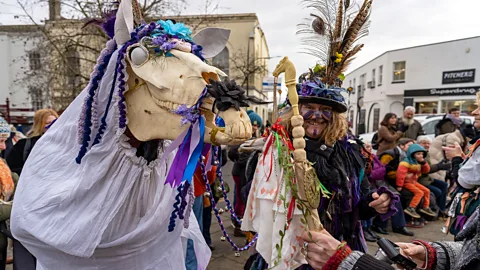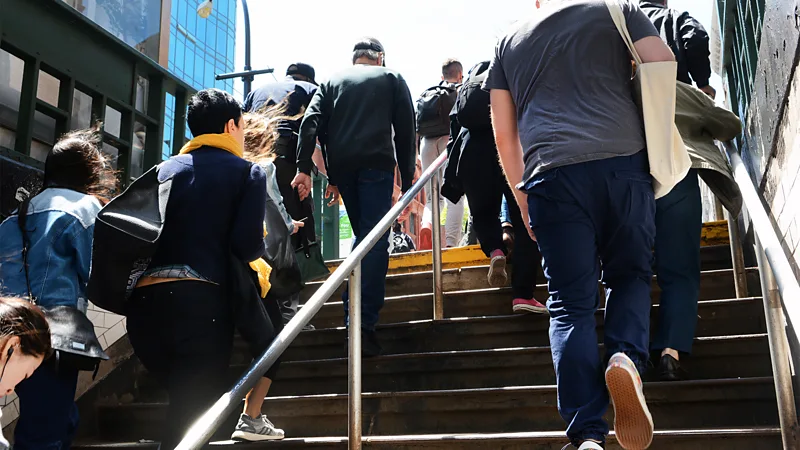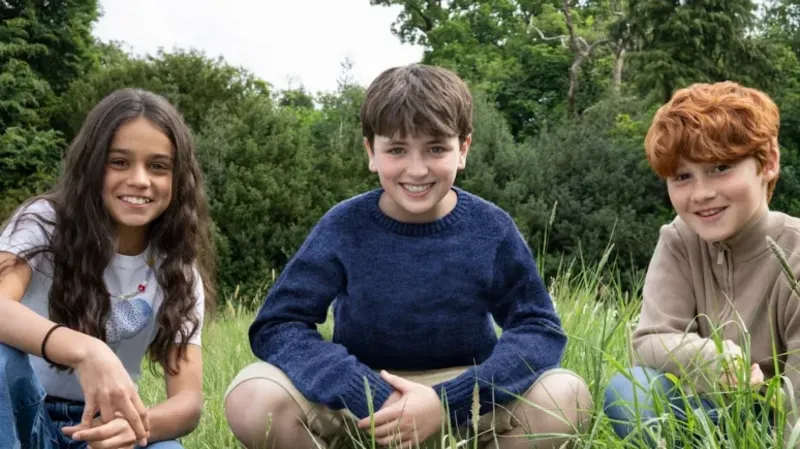Four of Europe's most fascinating pre-Christian winter festivals

Christmas has become the dominant festival in the Western cultural calendar, but echoes of the pre-Christian past can still be found across the continent.
Christmas is the dominant festival in the Western winter, with an immediately recognisable cast of characters: Jesus, the Holy Family and gift-giving figures like Father Christmas and the Three Magi. Look closer, though, and you'll find a mysterious ensemble of shadow characters populating Europe’s winter festivals, whispering echoes of a pre-Christian past. Some resemble stock characters from myth and legend, like witches and demons; others have an animist feel, invoking the spirits of nature.
Historically the Church tried to stamp out these folkloric figures, but many of them survived, often by being absorbed into Christian cultural customs. Today, they offer a fascinating glimpse into how folklore and religious traditions intertwine, forming the basis for vibrant festivals that travellers can experience for themselves. Here are four of the most fascinating:
Festa della Befana, Italy
The image of a witch riding through the night on a broomstick may not seem compatible with Christianity. And yet, in overwhelmingly Catholic Italy, that is the form taken by La Befana, who delivers gifts on the night of 5 January (also known as Epiphany Eve).
The Befana bears many similarities to Father Christmas. She flies through the night to deliver presents to children, Santa-style, and even enters their houses through the chimney – which is why she’s normally depicted covered in soot. She also serves a moral function, rewarding children who have been well behaved with gifts of toys and caramelle (hard candies), and punishing those who have been naughty by leaving them lumps of coal.

The Befana may have pre-Christian origins – she shares similarities with Strenua, the Roman goddess of new year gift-giving – but she has been co-opted into Italian Christianity through a myth that she sheltered the Three Magi when they were on their way to meet baby Jesus.
The Befana is found in folklore across Italy, but her home is considered to be the town of Urbania in the Marche region, where she is celebrated each January with the Festa della Befana. Some 30,000 spectators descend on the town to snack on befanini (rum-flavoured, witch-shaped shortbread biscuits), see the world’s longest stocking (an impressive 50m) paraded through town, and shop at pop-up markets selling local majolica ceramics. There are even costumed witches who perform dances in the street and "fly" (zipline) between church towers on their broomsticks.
Krampusnacht, European Alps
The date of 6 December marks the feast day of Saint Nicholas, a 3rd-Century Greek bishop who became the patron saint of children and is the real-life origin of the Father Christmas legend. In the Central European Alps, particularly Bavaria, Austria and South Tyrol, Saint Nicholas Day is marked, like the Italian Epiphany, by the giving of gifts to well-behaved kids.
 On 5 December, townsfolk and villagers across the Alpine region don Krampus masks and costumes (Credit: Getty Images)
On 5 December, townsfolk and villagers across the Alpine region don Krampus masks and costumes (Credit: Getty Images)The night before, though, is an altogether darker and more frightening affair: Krampus Night. Folklore in this part of Europe tells of the Krampus, a demonic figure – half-man and half-goat, depicted with a huge waggling tongue, dark fur, horns and wild eyes – who, like the Befana and Santa, punishes naughty children. The Krampus’s methods, though, are more severe: he beats children with rods of birch, or if they’re particularly badly behaved, carries them straight to hell in a basket he wears on his back. The Krampus is presented as Saint Nicholas’ assistant, and this odd couple often appear on greetings cards together.
The exact origins of the Krampus are lost to history, although, as with the Befana, it’s likely that he was a non-Christian folklore character who has been absorbed into the Christmas tradition. Nowadays, the night of 5 December sees the Krampuslauf (Krampus Run), with townsfolk and villagers across the Alpine regions donning Krampus masks and costumes, drinking significant amounts of schnapps (Krampus’s favourite tipple) and shaking bells to drive away bad spirits. Krampus Runs happen all over Austria and South Tyrol, but one of the largest and most accessible takes place in the Old Town of Salzburg.
Mari Lwyd, Wales
In Wales, the Christmas and New Year period is marked by one of the most striking British folk customs: the Mari Lwyd. This ancient tradition sees a horse’s skull decorated with tinsel and streamers and its eye sockets inlaid with baubles, with the whole thing attached to a pole and a bedsheet and worn as a costume by a local man. He then goes with a group of acolytes around the neighbourhood, knocking on doors and asking, through the medium of verse, to be let inside and given food and drink.
Similar practices are a feature of other festivals – trick-or-treating at Halloween, or door-to-door carol singing at Christmas. In the Mari Lwyd’s case, it is a variation of wassailing, in which people would go from house to house singing songs and offering a drink from a wassail – a large punch bowl containing mulled wine or cider – in exchange for gifts.
 Many historians believe that Mari Lwyd has pagan or Celtic origins (Credit: Alamy)
Many historians believe that Mari Lwyd has pagan or Celtic origins (Credit: Alamy)Mari Lwyds can be spotted around south Wales across Christmas and New Year, but the biggest event is held in the town of Chepstow on the border with England each January, which sees dozens of these strange skeletal horses descend on the streets. Each one is accompanied by a squad of Morris dancers, who give performances across the town before processing with the Mari Lwyds to the town’s museum, various pubs and Chepstow Castle, where they knock on the door in reference to the house-to-house wassail tradition.
They then move to the Old Wye Bridge, which marks the border between England and Wales, for a symbolic border ceremony with wassail groups from England, who are ultimately invited over to the Welsh side. Everybody then gathers in an orchard outside the castle for an apple wassail, where cider is poured over the tree roots, slices of toast are hung on the branches, and there is much Morris dancing, singing and, most of all, cider drinking. It’s said to bestow blessings for a good crop for the coming year – a very enjoyable, if somewhat eccentric British folk tradition.
Bear Dance, Romania
Bears famously hibernate through the winter, so you’d be justified for being even more alarmed than usual if you were to see a pack of them rounding a corner, snarling and swiping their claws, at this time of year. In the eastern Romanian region of Moldavia, though, it’s a common sight in towns and villages on 30 December – the occasion of the Bear Dance.
 The brown bear is a potent symbol of spiritual power in Romanian culture (Credit: Getty Images)
The brown bear is a potent symbol of spiritual power in Romanian culture (Credit: Getty Images)Romania is home to the biggest population of brown bears in Europe outside Russia, with as many as 8,000 of them roaming the forested slopes of the Carpathian Mountains, so it’s no surprise that this fearsome creature has become a potent symbol of spiritual power in Romanian culture. The Bear Dance sees townsfolk dress in real bear skins – which have been passed down through generations and weigh up to 40kg – and process through town while dancing to drums and pan flutes played by musicians in traditional folk costumes.
The main dance sees the bears symbolically die and become resurrected, representing renewal for the year ahead. It’s believed that the rite has its origins with the Geto-Dacians, the Indo-European tribespeople who pre-dated Roman arrival into Romania. The Geto-Dacians saw bears as sacred animals of strength and new life, to the extent that they were known to anoint newborn babies with bear fat. The Bear Dance takes place across north-eastern Romania, but the most famous festival is held in the town of Comănești.
Source: BBC
























































